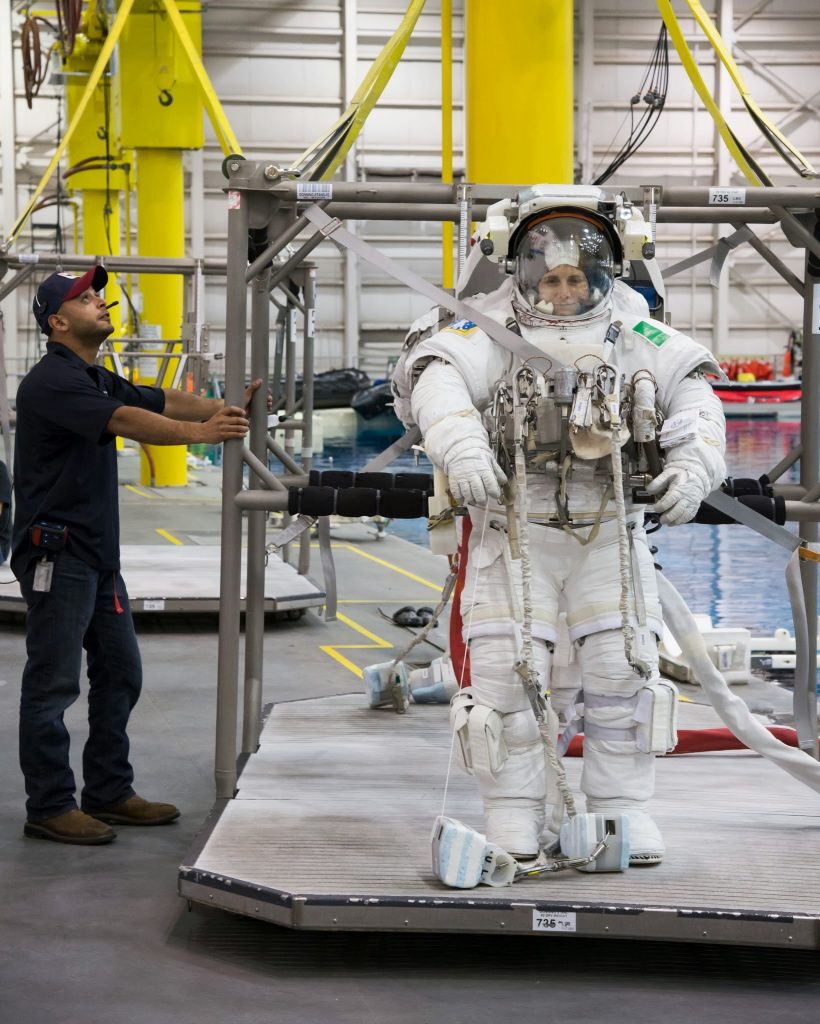I spent the morning at the NBL today diving in preparation of my EVA training run tomorrow.
As I’ve mentioned before (see L-481), diving is a great way of getting familiar with a task, especially in terms of translation paths and geometry of the worksite, as well as available handrails and other points of fixation.
Moreover, being immersed in the 3D space makes it a bit easier to picture how the safety tether routing will be. Safety tethers are anchored somewhere on structure, typically close to the airlock, and then unwind as you move away from the anchor point. We’re always supposed to stay attached to structure, but if we ever made the mistake of floating off, the safety tether would pull us back towards its anchor.
Sometimes we attach two safety tethers together to have more length, as you can see in the picture – the blue foam is for water buoyancy concerns. And as you can read in this account of Luca Parmitano of his recent EVA water anomaly, a safety tether can save the day in a variety of ways!
21/08/2013





